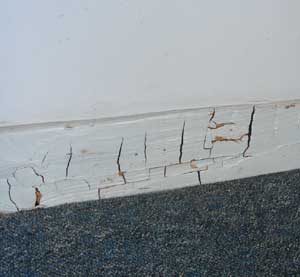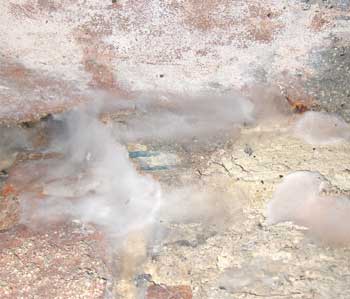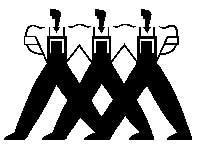Boracol 10 kills active Dry Rot - history in action
HISTORY- Boron for dry rot treatment
Over the centuries many attempts were made to control Dry Rot, which caused devastation in both buildings and ships, to the extent that the second HMS Queen Charlotte when she was launched in 1810 and inspected, the timbers of the upper decks were found to be infected with 'the dry rot'. By 1816 the cost of repairs for this vessel had exceeded the ship's original construction cost. Many ships were damaged or even sank because of Dry rot which infected the poorly seasoned timbers during construction.
Samuel Peyp's Report.
"The greatest part of these thirty ships (without having yet lookt out of Harbour) were let to sink in such Distress, through Decays contracted...lye in danger of sinking at their very Moorings". The planks were "in many places perish'd to powder" and the ships' sides more disguised by patching "than has usually been seen upon the coming in of a Fleet after a Battle". "Their Holds not clear'd or aird, but (for want of Gratings and opening their Hatches and Scuttles) suffer'd to heat and moulder, till I have with my own hands gather'd Toadstools growing in the most considerable of them, as big as my Fists."
Compounds of Boron, known as Borates, have been mined since the late 1800s (hauled by the famous "20 Mule Teams" of US Borax) and have been used to control insect pests, including termites and ants, for over 100 years, but this discovery came too late to save the great timber warships at the time of their construction. However, it is ironic that today the few remaining ships now on exhibition in dry docks and their modern replica cousins are being protected by Boron based wood treatments. From the Frigate Unicorn, now on display in Dundee to the new ships produced in wood by Batavia in The Netherlands, back to HMS Victory in London you will find a common theme - Boron wood treatments.
By the 1940s borate formulations were starting to be used to protect wood against Dry Rot. Because they are water soluble, Borates diffuse into wood using the wood's own moisture and willingly spread in all directions. Disodium Octaborate Tetrahydrate became the chosen Boron compound for this job, thoroughly tested by its main manufacturer, Borax USA.
In the 1970’s and 1980's the range of Boron based treatments expanded to include not only the Powder form (for Termites and Ants, for example) and the liquid form (dissolved in water for timber treatment against insects and rots before installation), but also into the Solid Timbor Rods (for installation into Railway Sleepers, Telephone and Electricity Transmission Poles to prevent rot and insect attack under ground) and Gels, for deeper penetration (when carried at higher concentration in Glycol).
These ranges of Boron based compounds continue today to give the very best protection against Dry Rot in buildings and ships.
Property Repair Systems,
T: 01626 872886
Site written by: David Moore
David Moore, B.A. (Hons.), C.T.I.S., C.R.D.S. Technical Author
Google+



